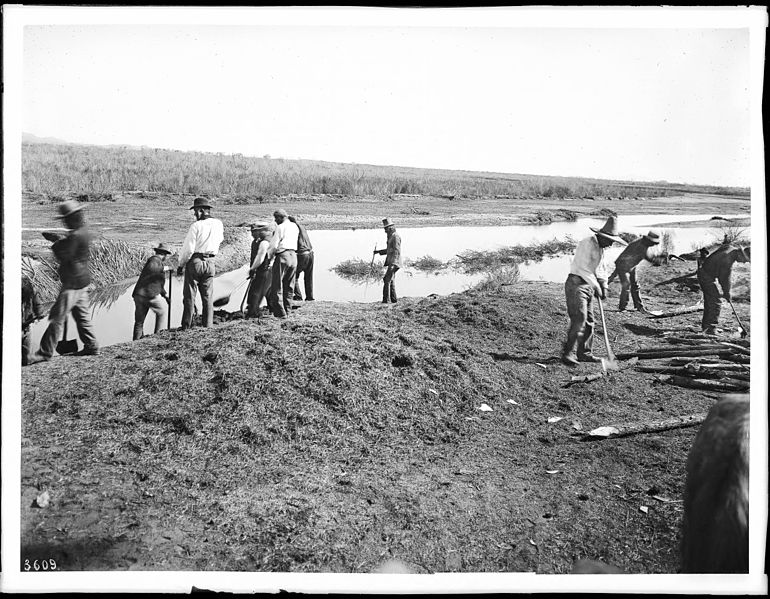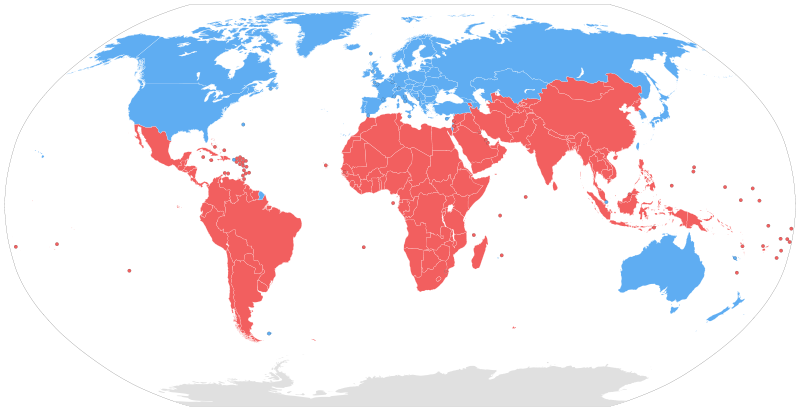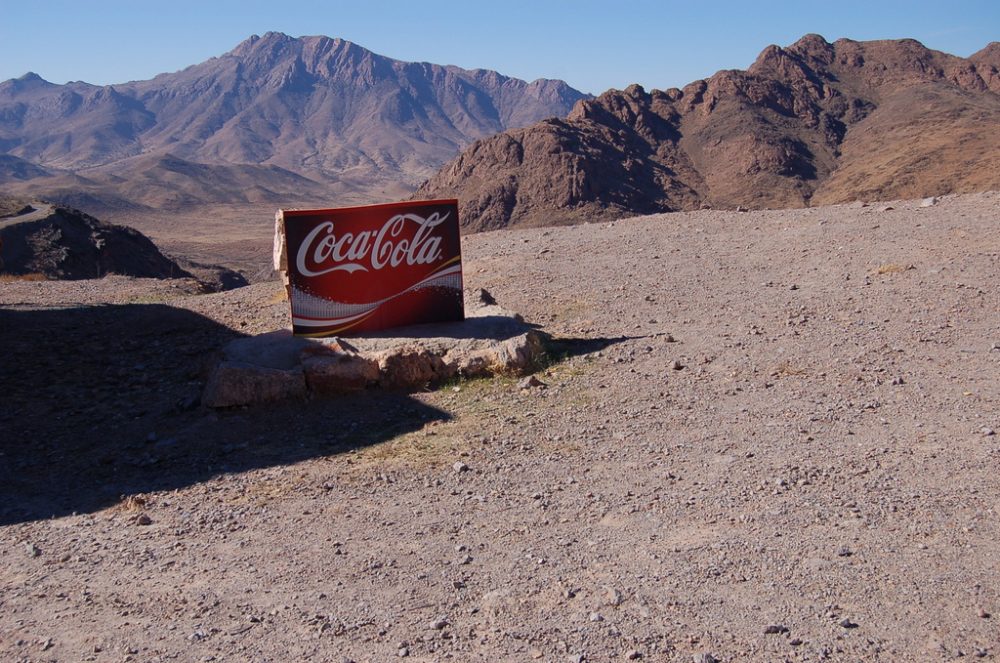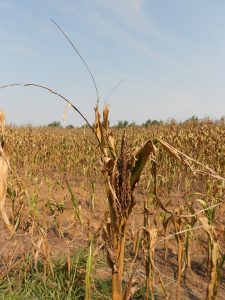Nutrition in The Global North and Global South
photo credit: “Grocery store” in Chile, All Rights Reserved Amanda Burns 2019



This paper is an exploration of nutrition and a globalized society. I wrote it as a final paper for a class called Nutrition and Anthropology.
The prompt was: What are the key challenges to good nutrition for all humans in contemporary times? What approaches would be most successful in addressing these challenges? and Discuss how your perspective on nutrition has changed over the semester and what topic(s) were most of interest to you.
This prompt was quite challenging to address with simple solutions. However, while brainstorming for this paper, I realized that I believe the main challenge to good nutrition is that we live in a globalized society in which unequal power dynamics are the driving forces for nutrition, as well as many other factors within society (healthcare, jobs, resource production and acquisition, culture, etc.). This ties back to an Anthropological/Sociological concept that needs to be considered within my studies, as well as on a larger scale- the idea that through globalization, societies are both repressed and freed in different ways.
Key Challenges for Good Nutrition for all
The domination of structures of power that were historically created, and currently divide, the Global North and Global South, affect the health and well being of everyone on earth. The overarching key challenges for good nutrition for all humans in contemporary times are the harmful effects of capitalism and globalization currently dominating society.
Marketing- Capitalism
In “Obesity from a Biocultural Perspective” (2006) Ulijaszek and Lofink explain the concept of an obesogenic environment, which is an environment where “there is a shift in diet toward increased consumption of energy-dense foods and decline in physical activity” ( p. 338). This is an accurate description of the United States. Less physical activity is necessary for most jobs (as well as leisure activities), the United States has a surplus of food, and because of this almost 30% of the United States population is obese (Ulijaszek and Lofink, 2006, p. C-1).
Because of this high prevalence in obesity, the U.S. population has become more and more interested in what is healthy and what is not. Companies and manufacturers have taken this into account, and gear a lot of their food packaging labels and ad campaigns towards implying health- low-fat, “diet” coke, sugar-free, etc. Many of these foods and beverages are only labeled as healthy because they are being compared to their more-unhealthy version (think Baked Lays as opposed to regular Lays Potato Chips). Others are simply lying to consumers. Wendy Shanker points out in her book, “The Fat Girl’s Guide to Life” (2004), that there have even been instances in which the nutrition facts on the back of the food package claim to have much less fat and sugar then was actually found when those foods were tested for nutrition content (p. 66). This all boils down to money. If companies can profit off of consumers, they will, which means, in some cases, including blatant lies or sneaky health implications on packaged foods.
Marketing- globalization
Marketing is seen mostly as a capitalist venture, however when marketing moves from one place to another, it turns into much more than that. On the flip side of obesity, there is under nutrition. This example highlights some negative implications of globalization through marketing.
In a lecture called “Globalization and Children’s Nutrition” (2013) Bogin points out that in places like Mexico, there is a phenomenon happening that he calls the “Coca Colonization of the Yucatan”, in which Coca Cola company influence has increased dramatically in the past decade. Although this could be seen as a good marketing strategy for the Coca Cola company, it is also an indication of the power that American (part of the Global North) companies and ideas have in places like the Yucatan (Global South). Bogin talks about a transition the Mayan people in Mexico recently went through, from a more traditional food system, consuming mostly yucca and corn, to a more globalized food system, including fast food (sugary sodas in particular) and how the introduction of these products by these big companies has affected the growth and nutrition of the people in these areas. He explains that the Mayan people in Merida are the shortest group of people in Mexico, which indicates stunted growth- a nutrition problem that presents itself in youth and has lingering effects into adulthood.
Agribusiness-
capitalism and globalization
Although globalization has positive effects, it also carries with it neo-liberalist policies and colonial undertones. Pushing out local people in order to take over land and resources is one of these negative outcomes. This phenomenon shows how the idea of globalization is intertwined with capitalism and big business (particularly agriculture). When thinking about the case of Rosario and the people in Guatemala, this idea really begins to take shape. As Dr. Hall-Clifford explained in a lecture given on 10/1/2018 at Agnes Scott College, in places like Guatemala where farming was a way of life and a way to provide food for the community, land is incredibly important. However, in places such as Guatemala, companies have come in and taken this land. This has forced the local people to move up into the less fertile areas- thus destroying their farming lifestyle as a ways of survival and income. When this capitalist domination begins to inflict socio-economic harm, as well as cultural destruction, malnutrition takes hold and refuses to let go.
This phenomenon is not exclusive to the Global South, however. A documentary called Bad Sugar (2008) highlights this problem within the United States. In Arizona, the Pima Indian community has a high prevalence of diabetes. A lot of them grew up on, and live off of, packaged and processed foods, which are available to them through the U.S. Government Commodities program. Historically their way of life was through agriculture and farming, however this is not the case currently. Almost all of their farms are currently inoperable because most of the land was unusable for years- a dam was built upstream, causing major loss of irrigation resources for farming. However, now that this is not the case, farming has been slowly starting up again within this community. The problem is that farming as a way of life is not feasible anymore because of competition, high start-up costs, ever-changing technology, and loss of generational knowledge (Bad Sugar, 2008). This destruction of way of life for the Pima Indians was created by a capitalist and colonial mindset, much as it was for the people in Guatemala, and in other areas around the world.

Credit: “Group of Pima Indian Farmers building a dam for irrigation, ca.1900” by Pierce, C.C. (Charles C.) licensed under Public Domain
WHAT APPROACHES WOULD BE MOST SUCCESSFUL
(ALSO WHAT IS MOst INTERESTING TO ME)
(ALSO WHAT IS MOst INTERESTING TO ME)
To broadly state an overarching solution to the problem of globalization and capitalism: The solution is viewing the Earth as a system; not as something that needs to be conquered or tamed, and in that respect, seeing ourselves as a part of the Earth and this system as well- every single one of us. (This is most interesting to me.)
Because of globalization, we are all interconnected in more ways that we ever have been before. However, because of capitalism and an individualistic view of society- we treat each other as if we are more divided than ever. Whether this division is based on socio-economic status, resources, skin color, ethnicity, national identity, age, or any of the other aspects of division- all of these are socially constructed, and therefore have ALL meaning but also NO meaning at all. They constantly shift and change, further supporting the idea that they are constructs, which can be created, destroyed, and altered.
The Earth is not a social construct however, and life/death is not either (for the most part). Therefore, if we are to survive (and thrive) as a group of human beings on this Earth, we need to see ourselves as such, and take responsibility for the destruction, pain, and suffering we have caused, and are still currently causing. In order to do so, we need to see ourselves as connected to this planet as well as to each other.
In “The Omnivore’s Dilemma Revisited” (2010), Armelagos points out that when the agricultural transition came about overall health decreased. Now that industrial agriculture has taken hold, although there are some benefits, the costs are ever increasing (p. 173). Some would argue that the energy that it takes to produce food (energy) has decreased, and therefore industrial agriculture is a positive advancement. Armelagos states that this is not the case however, because in the amount of human labor and energy that we are saving, we are losing to environmental degradation and harmful environmental impact (p. 173).
The impact that we have on the environment is not a one-way street. The environment is what we rely on to survive. “The State of Food Security and Nutrition”, an FAO report for 2018, states that “beside conflicts, climate variability and extremes are also a key force behind the recent rise in global hunger. They are also one of the leading causes of severe food crises.” Changing climate affects crop seasonality and survival as well as accessibility. Furthermore, when people rely on these crops for not only income but also survival, human lives are at stake.
For short-term solutions, location and culture are the most important factors to consider in approaching solving any problems- nutrition in particular. Because food bridges the gap between health/necessity and culture/social life, both of these factors are major determinants for success.
We must work with communities rather than for them, not only to be respectful of other cultures and ideas, but also because this will lead to the most effective and sustainable solutions. If a community can continue to expand upon the solutions that are put in place, and if the community stands by the solutions, we will be able to gain the most support in the present as well as in the future. These solutions must also be sustainable and environmentally beneficial. If we are to live on this Earth for many, many, many years to come, we must find solutions that are not only beneficial for us, as humans, but also for the Earth.
How my perspective has changed
Throughout the semester, I was able to draw concrete connections between health/nutrition and overarching social and physical aspects of human life. This allowed me to connect my interests in human impact on the environment to ideas about environmental impact on humans and how interconnected these ideas are. Realizing that living on this Earth is about giving and taking and connecting this to what I already saw as harmful aspects of society (globalization, capitalism, agribusiness, etc) allowed me to further understand the magnitude of our current situation and the need for a different way of thinking about the world and society as a whole.
References
Armelagos, G. J. (2010). The Omnivore’s Dilemma: The Evolution of the Brain and the Determinants of Food Choice. Journal of Anthropological Research, 66(2), 161-186.
Bogin, B. (2013, March 22). Globalization and Children’s Nutrition. Lecture presented at CARTA: The Evolution of Human Nutrition in Loughborough University. Retrieved from https://www.ucsd.tv/search-details.aspx?showID=24841.
FAO.org (2018). SOFI 2018 – The State of Food Security and Nutrition in the World, http://www.fao.org/state-of-food-security-nutrition
Ulijaszek, S. J., & Lofink, H. (2006). Obesity in Biocultural Perspective. Annual Review of Anthropology, 35(1), 337-360. doi:10.1146/annurev.anthro.35.081705.123301
Shanker, W. (2004). The Fat Girl’s Guide To Life. New York, NY: Bloomsbury.



